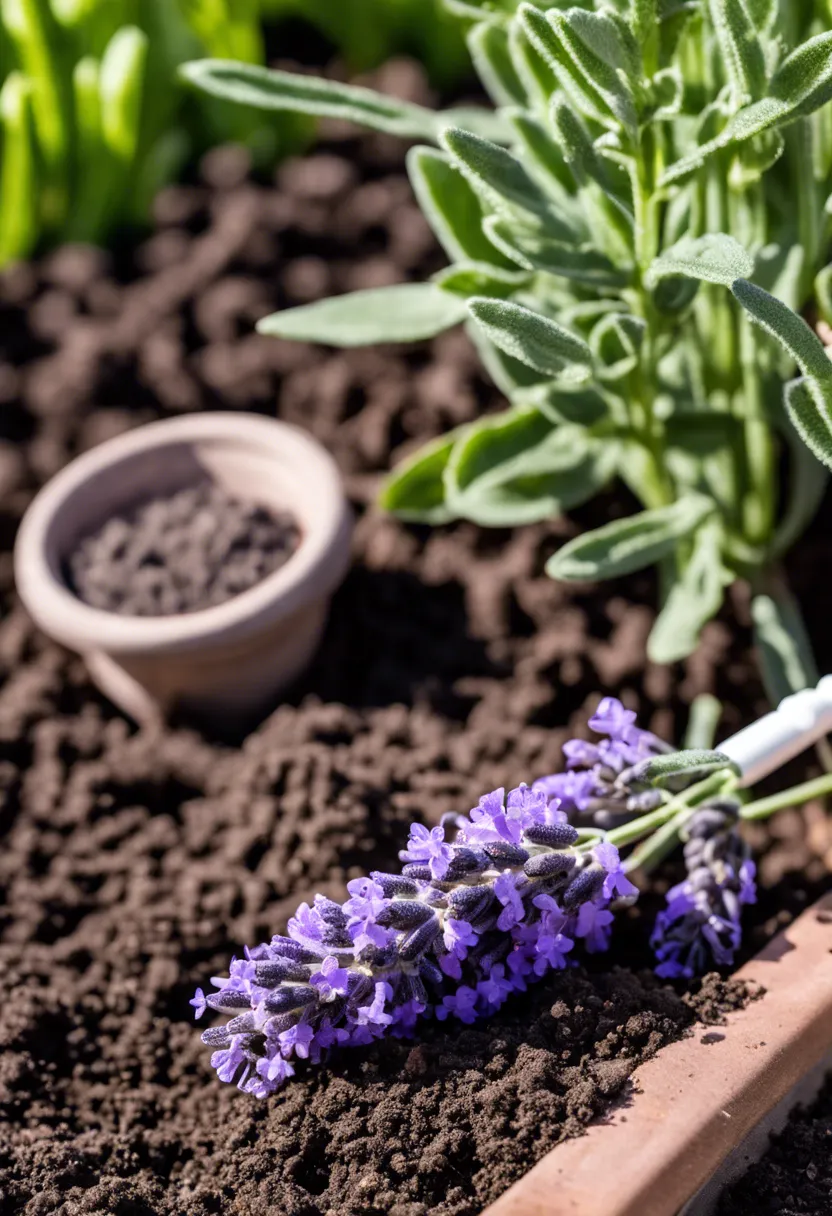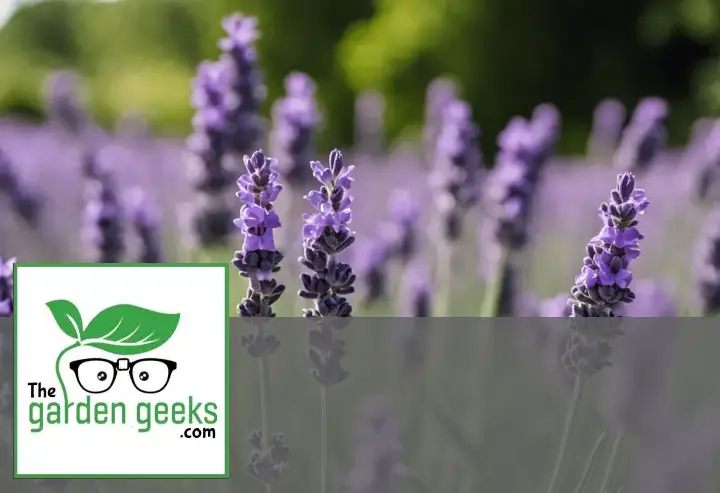Did you know that lavender is known as the “Swiss army knife” of plants due to its diverse uses? From aroma therapy, culinary delights, to home decor – it’s a favorite among many. But what happens when this versatile plant refuses to bloom? In this article, we’ll explore Why Your Lavender Isn’t Flowering.
Lavender’s failure to bloom can be a source of frustration for gardeners. The vibrant purple flowers not only add beauty but also an intoxicating scent to your garden. When these are missing, it feels like a part of your garden’s soul is absent.
So why isn’t your lavender flowering? The reasons can range from environmental factors, improper care, or diseases. Keep reading about Why Your Lavender Isn’t Flowering and learn how you can help your lavender thrive again.
Quick Answer
- Incorrect sunlight exposure: Lavender needs full sun to bloom properly. If it’s not getting enough, it won’t flower.
- Inadequate watering practices: Overwatering or underwatering can stress the plant and prevent blooming.
- Soil conditions: Lavender prefers well-drained soil with a neutral to slightly alkaline pH. Poor soil conditions can hinder flowering.
- Plant age and pruning: Young plants may not bloom in their first year, and incorrect pruning can also affect flowering.
- Environmental stressors: Extreme temperatures, pests, and diseases can all prevent your lavender from blooming.

What Causes Lavender to Fail in Flowering?
Sometimes, despite our best efforts, lavender not blooming can leave us scratching our heads. Let’s dive into why this happens.
Incorrect Sunlight Exposure
Lavenders are like the sunbathers of the plant world; they love soaking up those rays. Not getting enough sunlight is a big no-no and one of the top reasons for lavender failure. These plants need at least 6 to 8 hours of direct sunlight each day to thrive and flower. If your lavender is stuck in the shade, it’s going to sulk by not flowering.
On the flip side, too much of a good thing can also be bad. While it’s rare, extreme heat and constant direct sunlight without relief can stress your lavender out. This might lead to fewer blooms or even damage to the plant.
The sweet spot? Aim for that golden range of 6-8 hours of sunlight daily. This is the optimal sunlight for lavender, ensuring they have enough energy to produce those gorgeous flowers we all love.
Inadequate Watering Practices
Watering plants seems simple enough, right? But when it comes to lavenders, there’s a bit of an art to getting it just right. Too much water and you’ll find yourself with a sad, soggy plant that refuses to bloom. Lavenders come from dry, arid regions which means they’re built to survive with less water than your average garden plant.
Overwatering is actually one of the most common mistakes leading to lavender care mistakes. It can cause root rot and other nasty issues that will keep your lavender from flowering.
Underwatering isn’t great either but is less common since these plants are drought-tolerant. Still, too little water can stress them out and hinder blooming.
The trick is finding that balance – watering deeply but infrequently once the soil has dried out completely from the last watering session. This mimics their natural habitat conditions and promotes healthy growth and flowering.
How Soil Conditions Affect Lavender Blooming
Soil is like a dinner plate for plants. If it’s not good, your lavender won’t bloom well.
Soil Type and Drainage
Lavenders love to sunbathe in sandy soil. It’s like their favorite beach. Sandy soil lets water run through quickly, so their roots don’t get soggy shoes. Best soil for lavender? Think light and airy.
But if your garden is more clay than sand, it’s like walking in wet jeans for lavenders. Clay soil holds water too tight. Lavenders can’t breathe well in it. You’ll need to fix that by mixing in some gritty friends like sand or gravel.
Improving soil drainage isn’t hard. Imagine making a cake but for plants. Mix in some compost or sand into the clay soil. It’s like adding chocolate chips to make the cake better.
Remember, lavenders hate wet feet! So, if you’re planting them in pots, make sure there are holes at the bottom. This way, extra water can escape instead of throwing a pool party around the roots.
Soil pH and Nutrient Levels
Lavenders are picky eaters when it comes to pH levels. They love their soil just right – not too sour, not too sweet. The ideal pH for lavenders? Around 6.5 to 7.5 on the pH scale.
If your soil is too grumpy (acidic) or too chill (alkaline), lavenders might not flower well. You can check this with a simple test from the garden store. Then, if needed, add some lime (for sour soil) or sulfur (for sweet soil) to make it perfect.
Nutrients are like vitamins for plants. But guess what? Lavenders don’t need a buffet; they prefer a light snack. Too much fertilizer makes them lazy – lots of leaves but no flowers.
The key nutrients for them are nitrogen, phosphorus, and potassium but not too much! Think of it as seasoning food; just enough is perfect.



The Impact of Plant Age and Pruning on Lavender


Understanding the Growth Cycle of Lavender
Lavender starts its life as a tiny seed, but don’t let that fool you. This little guy has big dreams. In its first year, it’s all about growing strong roots and leaves. Think of it as the lavender’s childhood, where it’s learning to stand tall. By the second year, lavender is ready to show off with its first blooms. It’s like hitting puberty but in plant form. From then on, it’s a flowering machine every summer, given it’s happy and healthy.
As lavender matures, its ability to flower can dip if not given the right TLC. Older plants might get woody and less generous with their flowers. That’s why knowing when your lavender is in its prime blooming years is key to a garden full of purple bliss.
Pruning Techniques and Timing
Pruning isn’t just about snipping away; it’s an art form that lavenders love! Right after they bloom, grab your shears because it’s time for a haircut. Cutting back one-third of the growth encourages new shoots and prevents your plant from becoming too woody.
Spring is also a good time for a light trim. But remember, only cut into the green parts! If you venture into the older, woodier sections without green shoots, that part won’t regrow. It’s like giving your lavender a shape-up so it can strut its stuff come summer.
Different lavenders need slightly different approaches, but one rule remains: never prune too late in the season. You want to give those new shoots enough time to toughen up before winter hits. So keep your pruning party to early or mid-spring and right after flowering ends.
By following these simple steps—understanding when your lavender blooms best and giving it timely trims—you’ll be rewarded with a sea of purple every year.
Environmental Stressors That Prevent Lavender Flowering
Environmental factors play a big role in whether your lavender will show off its beautiful flowers or not. Let’s dive into how temperature extremes and pests or diseases can be party poopers.
Temperature Extremes
Lavender loves the sun, but too much of a good thing can be bad. When it gets super hot, lavender might stop flowering. It’s like when we get too hot and just want to sit in the shade. Lavender feels that way, too.
But it’s not just the heat. If it gets too cold, especially unexpectedly, that can also make lavender say “nope” to flowering. Frost can damage the plant, making it hard for flowers to grow.
The best temperature for lavender to flower is like a nice spring day—not too hot and not too cold. Think of Goldilocks finding the perfect porridge; that’s what your lavender wants.
Pests and Diseases
Now, let’s talk about uninvited guests—pests and diseases. These baddies can really stress out your lavender and stop it from flowering. Imagine trying to do something important while someone keeps bothering you; that’s how your lavender feels.
Some common troublemakers are little bugs that suck on plant juices or fungi that cause spots on leaves. Both can make your plant weak and less likely to flower.
But don’t worry! You can fight back by keeping an eye on your plants and using natural remedies like neem oil or removing affected parts of the plant. It’s like giving your lavender a helping hand to shoo away those pests and diseases.
Remember, healthy plants are happy plants, and happy plants are more likely to give you those gorgeous purple flowers you’re waiting for!
Signs and Solutions for Common Lavender Problems
| Problem | Signs | Solution |
|---|---|---|
| Overwatering | Yellowing leaves, root rot, wilting. | Reduce watering frequency. Ensure proper drainage. |
| Underwatering | Dry, brittle leaves. Wilted flowers. | Increase watering frequency but avoid waterlogging the soil. |
| Lack of Sunlight | Leggy growth, lack of flowers, pale leaves. | Move plant to a sunnier location or use grow lights if indoors. |
| Too Much Fertilizer | Burnt leaf tips, slow growth, fewer flowers. | Stop fertilizing immediately and flush soil with water to remove excess nutrients. |
| Poor Soil Quality | Stunted growth, yellow leaves, no flowers. | Improve soil quality by adding compost or other organic matter. Adjust pH if necessary. |
| Pests (Aphids) | Sticky residue on leaves or surrounding area, visible pests on plant. | Use insecticidal soap or introduce beneficial insects like ladybugs. |
| Disease (Fungal) | Spots on leaves or stems, moldy appearance. | Remove affected parts of the plant and treat with a fungicide. |
| Winter Damage | Dead branches, brown leaves. | Protect plants in winter with mulch or burlap wraps. |
| Incorrect Pruning | Sparse foliage, few to no flowers. | Prune correctly in early spring to encourage new growth and flowering. |


To Wrap Up
So, you’ve learned the top 9 reasons Why Your Lavender Isn’t Flowering. Maybe it’s not getting enough sun, or perhaps the soil isn’t just right. Or could it be that pesky winter frost?
Remember, lavender is a bit like Goldilocks – it needs everything to be ‘just right’ to bloom. So, don’t give up! With a little love and care, your lavender can flower beautifully.
Finally, keep experimenting with what works best for your plant. Happy gardening!
Question
What type of soil is best for lavender plants?
Answer
Lavender prefers well-draining soil. A mixture of garden soil with coarse sand or gravel can create ideal conditions. Lavender also likes alkaline soil, so adding lime can be beneficial.
Question
How often should I water my lavender plant?
Answer
Watering frequency depends on the plant’s age and the weather. Young plants need regular watering but mature lavenders are drought-tolerant. In general, water once or twice a week during dry spells.
Question
When is the best time to prune lavender?
Answer
The best time to prune lavender is in late summer after blooming has finished. This helps to maintain the shape and promote vigorous growth next season.
Question
What pests are common for lavender plants?
Answer
Common pests include aphids, whiteflies, and spider mites. These can be controlled with insecticidal soap sprays or introducing beneficial insects like ladybugs into your garden.
Question
Does lavender need a lot of sunlight?
Answer
Yes, lavenders thrive in full sun and require at least six hours of direct sunlight each day for optimal growth and flowering.
Question
Are there any signs that my lavender plant is stressed?
Answer
Yellowing leaves, wilting, lack of flowers, and weak growth are all signs that your lavender may be under stress due to factors like overwatering, improper lighting conditions or pest infestations.


